
Escape Velocity is a single-player role-playing space trading and combat video game series first introduced in 1996 by Ambrosia Software for the Macintosh. Two other similar games based on the original, EV Override and Escape Velocity Nova, followed in 1998 and 2002 respectively, the latter of which is also available on Microsoft Windows. In addition there is a trading card game available based on the storyline of the EV Nova universe.
Escape Velocity Nova is a video game developed by Ambrosia Software in collaboration with ATMOS. It is the third game in the Escape Velocity series of space trading and combat games. It was released on March 19, 2002 for Mac OS X and Mac OS 9, and later ported to Windows and released on July 11, 2003. The game's premise, set in a time period after mankind has discovered hyperspace technology, grants the player freedom to take missions, trade goods, steal from other ships, and enter one of six storylines.

Uplink is a simulation video game released in 2001 by the British company Introversion Software. The player takes charge of a freelance computer hacker in a fictional futuristic 2010, and must break into foreign computers, complete contracts and purchase new hardware to hack into increasingly harder computer systems.
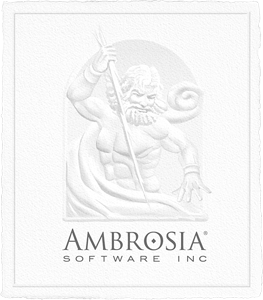
Ambrosia Software was a predominantly Macintosh software and gaming company founded in 1993 and located in Rochester, New York, U.S. Ambrosia Software was best known for its Macintosh remakes of older arcade games, which began with a 1992 version of Atari, Inc.'s Asteroids from 1979. The company also published utility software. Its products were distributed as shareware; demo versions could be downloaded and used for up to 30 days. Later the company released some products for iOS. Ambrosia's best-selling program was the utility Snapz Pro X, according to a 2002 interview with company president Andrew Welch.

The Power Mac G4 is a series of personal computers designed, manufactured, and sold by Apple Computer from 1999 to 2004 as part of the Power Macintosh line. Built around the PowerPC G4 series of microprocessors, the Power Mac G4 was marketed by Apple as the first "personal supercomputers", reaching speeds of 4 to 20 gigaFLOPS. This was the first existing Macintosh product to be officially shortened as "Mac", and is the last Mac able to boot into classic Mac OS with the introduction of MacOS X.

Vega Strike is a first-person space trading and combat simulator, developed for Microsoft Windows, Linux, FreeBSD and OS X systems. Many of the core game mechanics of Vega Strike are indirectly inspired by Elite. Other games, such as Wing Commander: Privateer, influenced the original developer.

X2: The Threat is a space simulation video game developed by Egosoft for Windows, Linux, and Mac OS X. It is part of the X series. It was released in 2003 and is a sequel to X: Beyond the Frontier. Freeverse Software ported the game to Mac OS X in 2004/2005, while Linux Game Publishing produced their Linux port in 2005/2006. An expansion pack, X2: The Return, was cancelled.

Casady & Greene was a software publisher and developer active from 1988 to 2003. The company primarily released software for Macintosh, but also released software for Windows and Newton. Casady & Greene was formed in 1988 when Greene, Inc. acquired CasadyWare, a company owned by Robin Casady.

Shattered Steel is a mech simulation game developed by BioWare and published by Interplay Productions for MS-DOS in 1996. It was later ported to Mac OS by now-defunct Logicware. It is notable for the deformable terrain effects, and for being BioWare's first developed game.
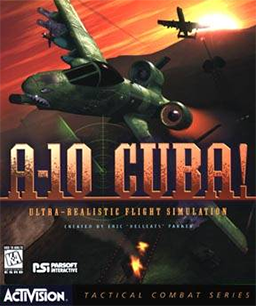
A-10 Cuba! is a flight simulator computer game developed by Parsoft Interactive and published by Activision in 1996 for Windows and Mac. The game was a sequel to the Mac-exclusive A-10 Attack!. A third game in the series, titled A-10 Gulf!, was slated for release in 1997, but later cancelled.
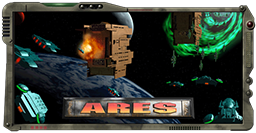
Ares is a space strategy video game created by Nathan Lamont of Bigger Planet Software, and first released by Changeling Software in 1998. In 1999 the game was re-released as shareware by Ambrosia Software and released as open source software and freeware in 2008. The key feature of the game was its ability to zoom in and out smoothly; this allowed the player to switch between a close-up view, which emphasized space combat skills, and a strategic view of the entire map.

Bubble Trouble is a maze game originally released for Mac OS 7 by Ambrosia Software in 1996. It is an interpretation of Sega's Pengo from 1982 with the penguin recast as a goldfish and the setting moved underwater.

Cap'n Magneto is a shareware graphical adventure game released for the Apple III in 1983 and the Macintosh in 1985. In 2020, the game was re-released as freeware. The game follows Captain Lance Magneto as he attempts to capture the Crown of Control, a mind-control device being used to commit piracy around the planet Rigel IV. As he approaches the planet the device is used on his ship, causing it to crash. The player controls Magneto and tries to collect items from the map in order to capture the Crown and leave the planet.

Pillars of Garendall is a role-playing video game that was built by Beenox Studios and Ambrosia Software. It was built using the Coldstone game engine, which was also a joint Beenox/Ambrosia project. The game was released in 2001 for Mac OS Classic, Microsoft Windows and Mac OS X.

Battle-Girl is a multidirectional shooter video game developed by Ultra/United Games and originally published in 1997 by Power Media for the Macintosh. In the game, players assume the role of the titular character taking control of her Soyuz 1183-A BattleCraft to save the Great Machine by eradicating malicious programmers released by Terminus, a weapon of Chaos. Its gameplay uses a two-joystick configuration reminiscent of Robotron: 2084.

Sid Meier's Pirates! is a 2004 strategy, action and adventure video game developed by Firaxis Games. A remake of Sid Meier's earlier 1987 game of the same name, it was originally published by Atari Interactive, but in May 2005 2K acquired the rights to the title from Atari's parent company Infogrames and later went on to publish console and handheld ports of the game.
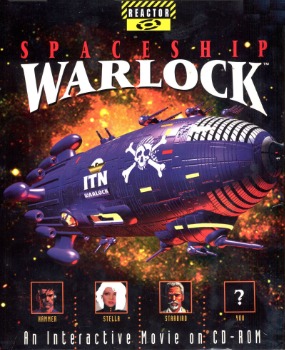
Spaceship Warlock is an adventure game created by Mike Saenz and Joe Sparks. The game was released in 1991 for the Macintosh and in 1994 for Windows.

Star Wars: TIE Fighter is a 1994 Star Wars space flight simulator and space combat video game, a sequel in the Star Wars: X-Wing series. It places the player in the role of an Imperial starfighter pilot during events that occur between The Empire Strikes Back and Return of the Jedi.

Hamlet or the Last Game without MMORPG Features, Shaders and Product Placement is an indie adventure game based on William Shakespeare's Hamlet. It was developed and published by indie game developer Denis Galanin.
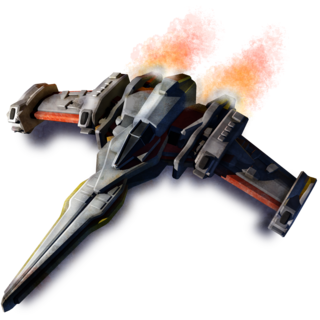
Endless Sky is a space trading and combat simulation video game, created by Michael Zahniser and first released in June 2015. In Endless Sky, the player starts out as a spaceship captain and can trade, transport passengers or fight pirates to earn money. There are also a few story lines that the player can choose to participate in. The game is similar to games in the Escape Velocity series.
















